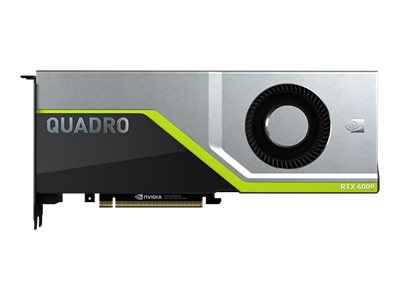NVIDIA Quadro RTX 6000
Graphics card - Quadro RTX 6000 - 24 GB GDDR6 - PCIe 3.0 x16 - 4 x DisplayPort, USB-C - Adapters Included
Out of stock
Manufacturer PNY
Part number VCQRTX6000-PB Copied
-
£4,345.99 Excl VAT
-
£5,215.19 Incl VAT
- Information
- Incredible application performance
- RT Cores for real-time ray tracing
- Tensor Cores accelerate AI workflows
- Next-generation VR support
- Quadro RTX NVLink
- Review
- Specifications
- Extended specifications
- Downloadable files






